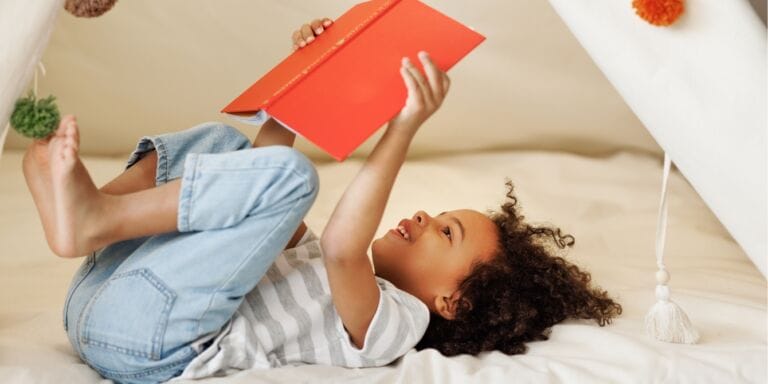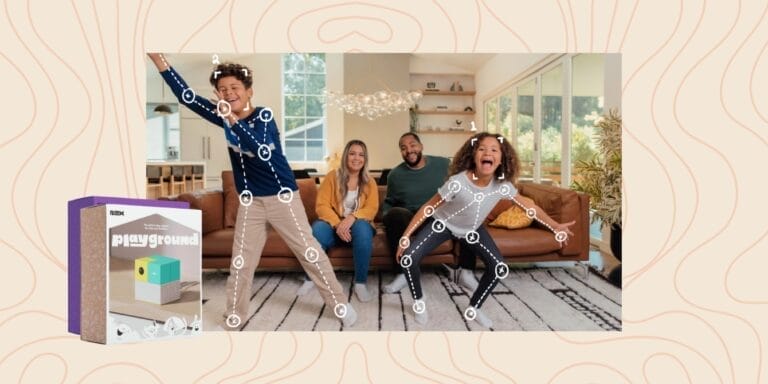Montessori at home: How to fight summer boredom

Here's how to set your child up for a summer full of awesome independent play.
Table of Contents
Summer days are a great time to play with your child and do special activities together. Setting up a few areas in your home where your child can play independently will allow your child to have fun playing on their own, too—so that you can recharge as well.
Digital Classes from Motherly
There are many creative ideas for boredom busters out there, but the Montessori way takes a slightly different approach to summer boredom. In a Montessori summer vacation, the role of the adult is to prepare the environment, rather than to entertain the child. This means setting up a space filled with simplicity, beauty and interesting things—encouraging independent play and learning.
Related: 14 activity books for kids of all ages
Montessori at home—Set your child up for independent play this summer
You can do a lot to help your child successfully entertain themselves through how you set up their environment. Montessori environments are simple, organized and allow children to access all of the activities they may want to complete on their own.
To replicate this at home, look around your child’s room and try to identify anything they haven’t played with in the last two weeks. Then put it away in a closet. Bring it out a few months later when it will seem new again.
It can seem baffling when children say they’re bored when they have so many toys, but sometimes they are just overwhelmed by choice or clutter. Fewer toys can often be more engaging.
Related: It’s Science: Toddlers are happier with fewer toys
Next, take a look at how the room is set up. Can your child reach their toys and books by themselves, or are they too high on a shelf? Are things organized in a logical way? Does everything have a specific place where it belongs?
These things may seem insignificant, but many young children have a strong sense of order and it can be hard for them to concentrate or really delve into playing if things are too chaotic.
One strategy that can be helpful is organizing the room by category. Every Montessori classroom is organized this way, with all of the language work together, all of the math together, and so on. The categories would look different at home. Try putting all of their puzzles on the same shelf and art supplies in the same bucket.
Here are Montessori-friendly areas you might include in your child’s space to encourage independent play this summer:
Art
Designate a small shelf or corner for an art area for your child. For a young child, it can be helpful to have each art activity on its own tray.
You might have a tray with oil pastels and black paper, a tray with two or three paint colors, paper, a paintbrush, a water cup, and an apron to protect their clothes. Then a tray with a bowl full or paper scraps, a small container of glue, and some paper.
You can switch out the art supplies throughout the summer as you notice their interest waning.
The first time they choose the activity, give them a lesson, showing each step, including how to clean up and where to put the picture when they’re done. After you’ve shown them how, they should be able to choose the activities and do them independently whenever they want.
For a slightly older child, you could set up a maker space with various supplies.
Food prep
Many children love preparing food and there are so many fun food prep activities that toddlers and older children can complete by themselves.
Clear off a small shelf or drawer in the kitchen for your child’s kitchen tools and food prep activities so that they can choose what they want. A simple one to start with for young children is peeling an orange. All you need is a small tray with two bowls, one for the orange peel and one for the orange slices.
Other activities include carrot or cucumber slicing using a wavy chopper, egg peeling and slicing, banana peeling and slicing, and cherry pitting.
Older children can do things like make guacamole or bake bread using a toaster oven. If you show your child how to use the tools safely and how to clean up, these are all things that they can do independently.
Science and nature
Choose a small area of your home to serve as a science and nature center. This could simply be a little table in your child’s room. Include books about plants, animals, geography, and whatever else you notice your child is interested in.
Find a little box or basket to use for a nature collection—where all of those little pebbles and feathers they gather outside can go. When the box is full, it’s time to return some things to nature. Bonus: Include a magnifying glass so they can examine everything.
You can also include things like fun insect specimens or a selection of magnets for open exploration.
Storytime and language
A well-stocked and cozy book corner is always a wonderful place for a child to spend time.
For a younger child, consider a set of interesting picture cards for building vocabulary. Don’t use them as flashcards to quiz your child, just talk about each one together. For an older child, include some story writing paper and colored pencils and encourage him to write his own stories as well.
Other areas that you won’t find in a classroom but might want to include at home are pretend play and a building area with various kinds of blocks and legos. You can really set up a small area for anything your child is interested in.
A version of this story was originally published in 2018. It has been updated.






































